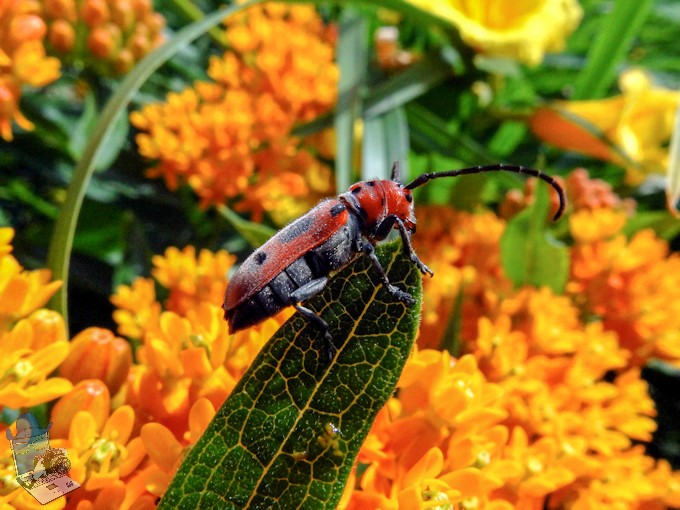Sometimes when going in close for a flower picture, you might encounter something else besides the flower. These flowers were attracting a lot of honey bees and this longhorn beetle. Commonly known as the Red Milkweed Beetle, it is also called Milkweed Borers and Four-eyed beetles. The “four eyes” refer to the way the socket of an antenna divides each compound eye in two, resulting in a “lower eye” and an “upper eye”.
Normally this beetles are found on milkweeds, hence their name, but this guy seems to find this leaf very tasty. It is said that these beetles will “squeak” when held and purr when feeding on milkweeds. I didn’t hold him to see if that is true so I guess I will have to try that the next time I see a Red Milkweed Beetle.
About the time that milkweed buds are swelling and beginning to flower, these small black-dotted red beetles will emerge looking for a mate and the female will lay her eggs on the stem near ground level. The young will bore into the stem to feed and eventually bore to the roots to spend the winter emerging in the spring to start the cycle again.
Milkweeds have fairly potent toxins, and the insects that eat milkweed become, in turn, toxic. Such insects are often colored in bright red or orange to advertise that fact and less likely to be eaten by birds.
Red Milkweed Beetle


